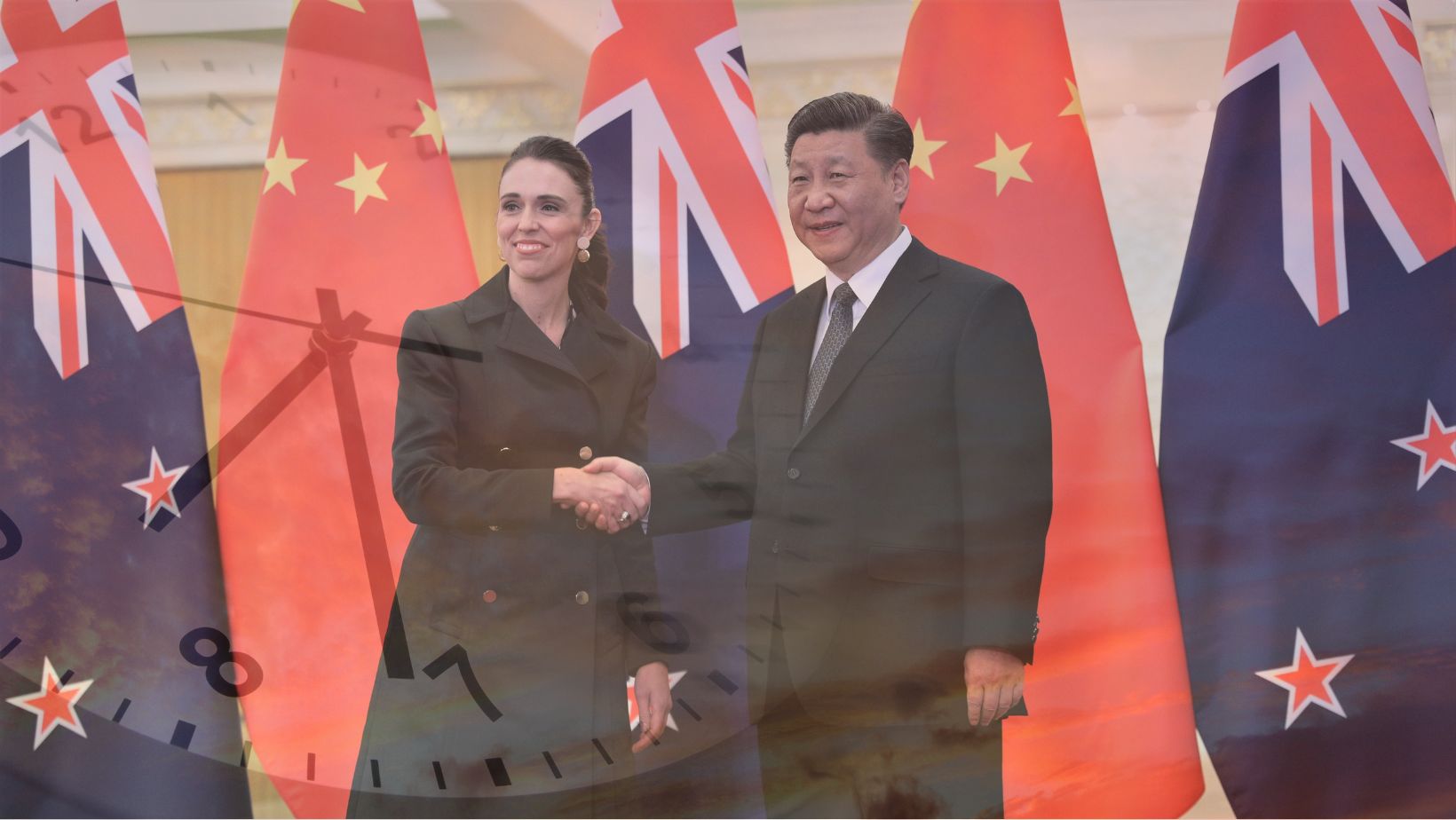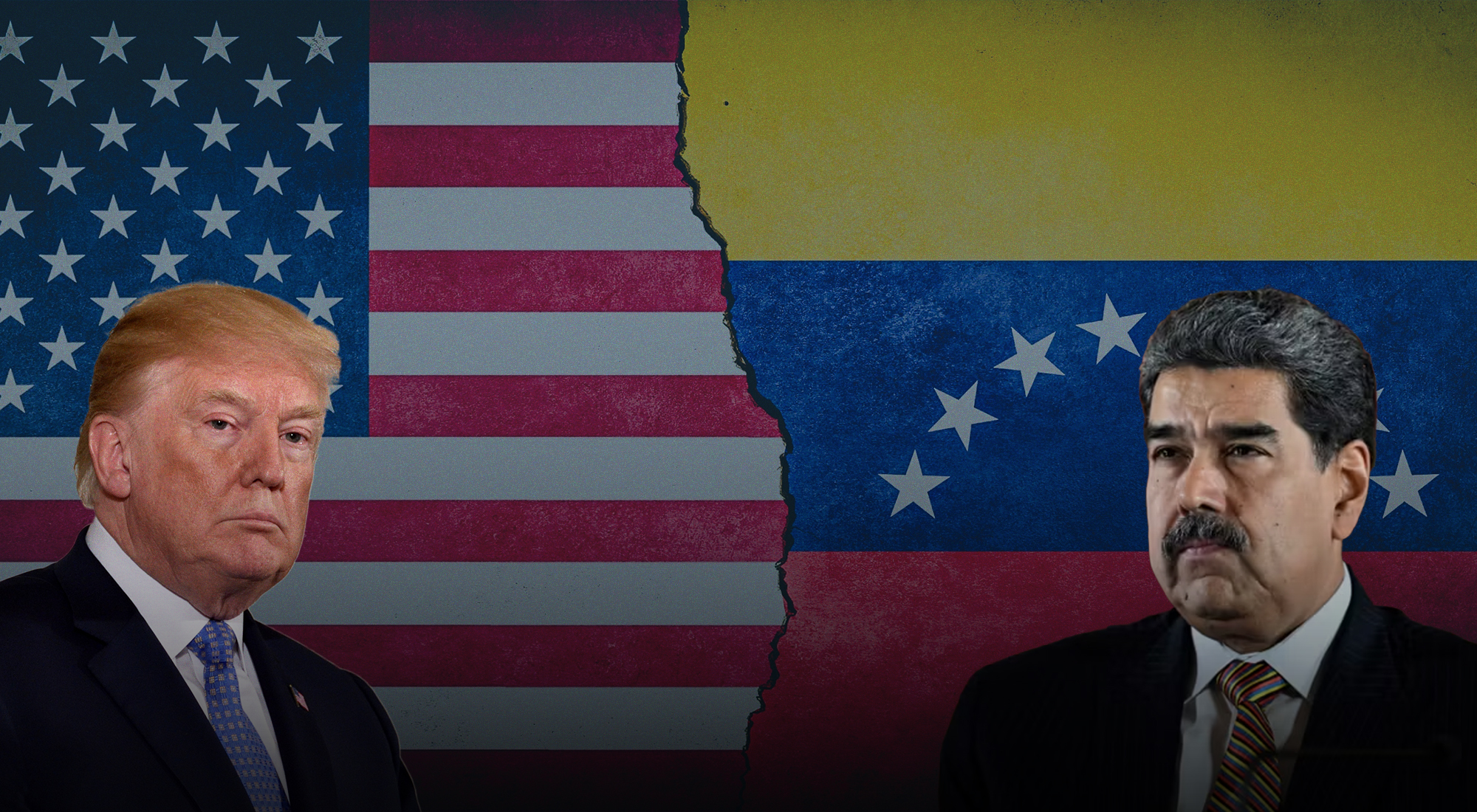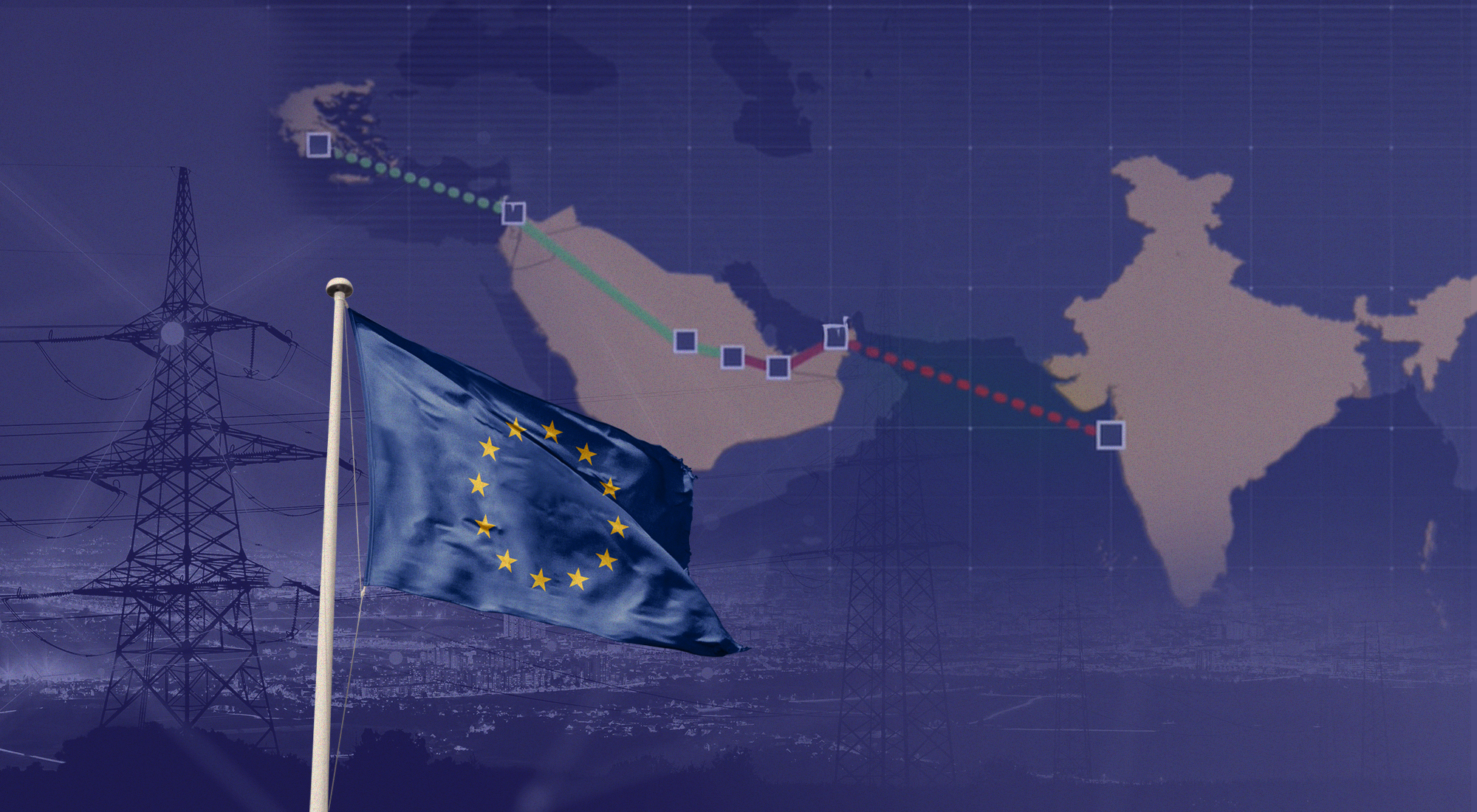Abstract
The relationship between New Zealand and China has grown significantly since the signing of a Free Trade Agreement in 2008, becoming what both sides regularly term a “mature relationship”. However, the resilience of the relationship is being heavily tested at the moment as the geopolitics of the Indo-Pacific super region are rapidly changing and the seeds of a new Cold war are taking root. This strategic insight examines New Zealand’s relationship with China since Jacinda Ardern became Prime Minister in late 2017, with a specific focus on the recent geopolitical tensions between China and the US in the Pacific. While it is acknowledged that New Zealand’s hitherto China strategy is coming under significant strain, it is not yet a foregone conclusion that New Zealand will follow Australia’s path and align completely with the US. Rather, New Zealand will continue to use its relatively advantageous geopolitical position to attempt to find a positive middle-ground between China and the US in the Indo-Pacific.
In recent months, it has become more and more apparent that New Zealand’s hitherto strategy for dealing with China – what I term an asymmetrically aligned hedge[1] – is becoming increasingly untenable as the Indo-Pacific region becomes further embroiled in competition between China and the United States of America (US). Despite New Zealand’s prime minister, Jacinda Ardern, stating in late 2020 that New Zealand’s relationship with China is a ‘mature’ one because “there have been multiple times where there have been issues that we … have been able to [maturely] raise,” serious challenges are arising that will put significant pressure on Wellington to chart a different course.[2]
On the one side, the US has spearheaded the revitalization of the Quadrilateral Security Dialogue (colloquially known as the “Quad”) and is the key member in the newly formed AUKUS security pact between Australia, the United Kingdom, and the US. Such developments evoke memories of the original Cold War, especially the strategy of containment against the Soviet Union. Although there are significant material and ideological differences between the original Cold War and the current brewing tension between the US (and its allies) and China, it is clear that threat perceptions in Washington (and Canberra) have become “Cold War-esque”, which creates a pessimistic psychological framework from which to make policy. To this end, the US seems to envision forging a “coalition of the willing” as a necessary step in combatting China’s rise.
On the other side, China has also sought to maximize its regional influence over the last decade, most notably through its flagship Belt and Road Initiative (BRI); a grand strategy that uses massive infrastructure investment to try and increase geoeconomic links between China and its peripheries. Furthermore, this has coincided with China adopting a far bolder and more aggressive stance under the leadership of Xi Jinping, who has stopped emphasizing the more diminutive “peaceful rise” doctrine for a focus on rejuvenating China’s great power. Although New Zealand is far away from the major flashpoints of China’s growing assertiveness – such as the South China Sea and spots along the border with India – China’s recent agreement with the Solomon Islands and its pursuit of a Pacific-wide pact has caused consternation not only in Washington and Canberra, but in Wellington too.
This strategic insight assesses New Zealand’s relationship with China in light of the shifting geopolitics of the Indo-Pacific. The first section provides an overview of the relationship, with a particular focus on the Ardern government’s asymmetrical alignment strategy. The second section examines the debate around China’s Pacific incursions and how the Ardern government is seemingly changing its tone on China. Finally, the third section looks at the potential strategic avenues New Zealand might be forced to take if their ‘mature’ relationship with China unravels.
- Evolution of New Zealand-China relations under the Ardern government
New Zealand and China formalised relations in 1972. Relations were rather modest at first, particularly as China was in the midst of the “Cultural Revolution” and had somewhat retreated from the global stage. Trade, however, became an important consideration after New Zealand’s top trade partner at the time, the United Kingdom, joined the European Economic Community in 1973. China’s “opening up” under the leadership of Deng Xiaoping, which began in 1978, undoubtedly set China and New Zealand on a path of trade convergence, although hiccups did occur in the relationship, such as the fallout over the Tiananmen Square massacre.[3]
However, by the early 2000s, China had surpassed the United Kingdom as a destination for exports and, in 2004, New Zealand and China opened negotiations on a Free Trade Agreement (FTA). The then New Zealand Prime Minister, Helen Clark, remarked that New Zealand was “the first developed country to conclude a bilateral market access agreement with China for its entry to the World Trade Organization; the first to recognise China’s status as a market economy and the first country to enter FTA negotiations with China.”[4] The FTA came into force in 2008 and has been subsequently “upgraded” on three occasions: in 2014, 2019, and 2021.
The Ardern government entered into power with quite an ambitious strategy for China. Ardern’s election occurred shortly before the 45th anniversary of official China-New Zealand relations and, on that occasion, the then foreign minister, Winston Peters, remarked that the relationship in that period had evolved into something akin to a “comprehensive strategic partnership” and that “New Zealand and China have grown beyond the business and institutional contacts.”[5] Thus, China was simply not just seen as a country to which New Zealand could export goods but rather as a partner and, even, a potential friend – forging friendships being a critical aspect of China’s foreign policy under the leadership of Xi Jinping.[6
With this development, the Ardern government started playing with the idea that perhaps New Zealand’s strong relationship with China could help it act as an “honest broker” in helping soothe relations between China and New Zealand’s long-time ally, the US. New Zealand’s trade minister, David Parker, stated in 2018 that New Zealand could be a “bridge” between the US and China.[7]
The question of New Zealand’s alignment between the US and China has since grabbed significant media attention and generated wide scholarly debate.[8] Given that New Zealand already signed a memorandum in 2017 with China to be part of its BRI[9] – the only member of Five Eyes to do so – it appeared Wellington was flirting with the idea of cultivating a dual-alignment with China and the US. A dual alignment is a bold form of hedging because the smaller power aims to concurrently align with both sides of the regional great power competition they are caught between. In other words, rather than being a more passive player – as in other forms of alignment – dual-alignment entails a more active role by the smaller power in cultivating a “win on both sides” middle ground between the competing larger powers.
However, New Zealand’s apparent dual alignment goal became nothing more than a “pipe dream” as Sino-American relations began to cool and the Indo-Pacific became geopolitically more tense. In lieu, New Zealand has had to maintain an asymmetrical alignment. An asymmetrical alignment is when the smaller power nominally (usually with regards to security) aligns with one great power but does so in a way that is not exclusive to having relations (usually trade) with the other great power. This is a less ambitious strategy than dual-aligned hedging, but certainly more ambitious than a non-aligned hedge as the smaller power is still trying to forge a middle ground, whereby it reaps the benefits of alignment with one state while also benefitting from the cordial relations with the other.
In truth, New Zealand has been pursuing an asymmetrical alignment for at least the last decade and a half. On the one side, New Zealand – although absent in recent initiatives like the Quad and AUKUS – aligns with several of Washington’s security initiatives, such as its contributions to the wars in Iraq and Afghanistan and its membership of the Five Eyes intelligence alliance and the ANZUS (although, New Zealand remains, in practice, partly suspended due to its anti-nuclear stance) security treaty, to name but a few. But, on the other hand, New Zealand has also emphasized deepening trade ties with China, especially since signing an FTA with China in 2008. New Zealand’s trade with China has, subsequently, increased significantly. In 2008, China, as a destination, accounted for a mere 5.8% of New Zealand’s exports but, by 2020, New Zealand’s exports to China rose to 27.7%.[10] This was only slightly less than Australia, Japan, and the US combined, which accounted for 30.5% of New Zealand’s exports.
For Wellington, this ‘asymmetrical’ configuration appeared, until recently, to be deemed the optimal one. The optimistic and idealistic tones of attempting to be a bridge between China and the US, which were present in the early years of the Ardern government, have now ceased. However, New Zealand still continues to see China as a core part of its future, despite the increased tensions between China and two of New Zealand’s longest friends, Australia and the US. In her first speech as New Zealand’s foreign minister in 2021, Nanaia Mahuta, laid out a continuation of an asymmetrical alignment strategy, summarised as: “China for trade, US for defence, and Pacific at the centre.”[11] Later, Mahuta used the metaphor of a taniwha (a mythical creature of Aotearoa/New Zealand) and a dragon (a mythical creature of China) to emphasize the ‘maturity’ of the Sino-New Zealand relationship, stating: “I see the Taniwha and the Dragon as symbols of the strength of our particular customs, traditions and values, that aren’t always the same, but need to be maintained and respected.”[12]
- Emergent challenges to New Zealand’s China strategy in 2022
Entering 2022, New Zealand, despite mounting criticism from all sides, remained resolute in continuing to undertake an asymmetrical alignment between the US and China. In the second half of 2021, Ardern seemingly doubled down on this strategy. After saying that New Zealand had adopted an “Indo-Pacific outlook” – in line with the US, the United Kingdom, and Australia – she stressed that New Zealand was against the use of the Indo-Pacific concept “as subtext, or a tool to exclude some nations [meaning China] from dialogue.”[13] As she pointed out: “Our success will depend on working with the widest possible set of partners … China remains an engine of global growth and one of our most significant, but also one of our increasingly complex relationships.”[14]
However, China’s recent initiatives and manoeuvres in the Pacific have changed the domestic discourse in New Zealand significantly. The announcement of a “security cooperation agreement” between China and the Solomon Islands in April was the first flashpoint to elicit significant debate in New Zealand. While Ardern took a somewhat measured approach, merely noting China’s “growing assertiveness” in the region,[15] former member of parliament, Peter Dunne, lamented New Zealand’s “fifty years of sycophancy to China,” which had left it in an ethically questionable position in the Pacific.[16]
Then, in May, it was revealed that China was courting ten Pacific states to join a “Pacific-wide pact”, which would strengthen cooperation on issues such as policing, security, and data communications. In response, Ardern offered a more outspoken response than with the previous Solomon Islands deal, stating “the Pacific is our home … we considered the Pacific our family and where those needs exist, we are ready and willing to respond to that call,” noting that New Zealand had “the means and ability to respond to any security challenges.”[17] Reflecting the growing concern about China, prominent New Zealand-based China scholar, Ann-Marie Brady, likened China’s initiatives in the Pacific to a “blitzkrieg”, while also referencing Imperial Japan, which undertook significant expansionism in the Pacific in the 1930s and 40s.[18]
Coinciding with the ostensible cooling of New Zealand’s attitude towards China has been Ardern’s refreshing of New Zealand’s relationship with the US, most notably via an official visit to Washington in late May. Meanwhile in the US, it was announced that New Zealand would be a participant in the US-led Indo-Pacific Economic Framework (IPEF), an initiative viewed, in part, as an attempt to increase the US’ geopolitical presence in the Pacific and ward off the encroachments of China. Ardern said of this initiative: “We see this Framework as an opportunity to enhance our strong partnerships with major regional economies as we continue to reconnect with the world.”[19]
Although it may appear that New Zealand is in the first stages of moving away from its hitherto China strategy and aligning more closely with the US, 2022 also marks the 50th anniversary of official diplomatic relations between New Zealand and the People’s Republic of China. The real litmus test of the relationship will likely come in December with how New Zealand chooses to commemorate 50 years of diplomatic relations. While New Zealand’s rhetoric at the 45th anniversary, in 2017, was warm and talked of a “comprehensive strategic partnership,” it is clear that the Ardern government no longer has grand dreams for its relationship with China vis-à-vis the US and Pacific. However, one should not rule out New Zealand’s desire to maintain a ‘mature’ relationship with China.
- Future of the relationship
China’s growing assertiveness in the Indo-Pacific is already piling extra pressure on New Zealand’s hitherto grand strategy. If the situation deteriorates further, it will be likely impossible for New Zealand to maintain a security alignment with the US and, at the same time, continue robust trade relations with China. However, this does not necessarily mean New Zealand would be forced to abandon a hedging strategy and choose a side. Hedging would still be conceivable, albeit a more modest non-aligned style of a hedge. Non-aligned strategies became popular during the original Cold War – made famous by Yugoslavia – for relatively smaller powers caught in regional settings beset by competition between the Soviet Union and the US, two superpowers engaged in a global struggle for supremacy. Non-alignment should be considered the most modest type of hedge because although it still attempts to forge a middle ground between the larger powers to avoid having to choose a side, the relatively smaller power plays a more passive role than with more ambitious alignments.
New Zealand adopting a non-aligned strategy would entail breaking its 70-year strategic alignment with the US, something which seems highly unlikely at the moment. Nevertheless, non-alignment might be attractive to New Zealand as avoiding being sucked into the increasing zero-sum tension of the Sino-American relationship appears to be a major goal of the Ardern government so far. However, as the Yugoslav experience during the Cold War demonstrates, forging friendships with other non-aligned countries is crucial to making it work. In the Indo-Pacific, two such friends can potentially be found among members of the “official” Non-Aligned Movement (NAM), Malaysia and Indonesia, who have jointly opposed the US’ increased efforts to counter China, fearing it could “lead to tensions caused by an arms race and power projection.”[20]
Given New Zealand’s strong identification with pursuing a “principled, independent foreign policy”, it is plausible that non-alignment becomes a popular strategic option in Wellington if Sino-American relations deteriorate, just as the Soviet-American relationship did in the late 1940s. However, if hedging is deemed too risky or becomes completely untenable, then New Zealand is likely to be forced to choose a side. This scenario evokes the neorealist view of international relations which holds that when a rising adversary threatens the status quo, a relatively smaller power has two main strategic options: balance or bandwagon. Balancing entails a state solidifying its relationships with other powers against the revisionist power to preserve the status quo. Bandwagoning entails a state aligning with the revisionist power to profit from their revisionism. Bandwagoning is generally much riskier than balancing as it is not only likely to upset those invested in maintaining the status quo, but any material success for the bandwagoner relies on the revisionist power being successful.
If New Zealand finds itself in a situation where it has to choose between balancing with the US or bandwagoning with China, it is almost certain that New Zealand will follow in Australia’s footsteps and firmly align itself with the US. This is for good reason as bandwagoning China’s rise would entail New Zealand turning its back on its oldest friends and siding with an increasingly totalitarian, defensively nationalistic, and internationally belligerent power, all for maintaining the benefits of trade and inclusion in China’s international initiatives. The costs massively outweigh the benefits.
Of course, if New Zealand is forced to balance China by fully signing up to a US bloc, it would come with great economic costs too, especially as China is easily New Zealand’s most important trading partner. But, perhaps, as a contingency for this scenario, New Zealand has already set in motion efforts to diversify its trade to lessen its reliance on China. New Zealand is a founding member of the Comprehensive and Progressive Agreement for Trans-Pacific Partnership (CPTPP) and the IPEF. It also recently signed an FTA with the United Kingdom and is negotiating one with the European Union. The urgency of trade diversification can be seen in Ardern’s 2022 schedule, which will involve her leading “trade delegations and trade-supporting visits into four key markets this year – Australia, Asia, the United States and Europe.”[21]
- Conclusion
New Zealand might eventually be forced into choosing the US at the expense of China, but, as it currently stands, it has arguably the most “strategic wiggle room” of any state in the Indo-Pacific super-region.[22] Comparatively to Australia – which has already clearly chosen to balance against China with the US – New Zealand has a number of advantages that make pursuing a more independent foreign policy possible. New Zealand is small and non-threatening. It has earned a global reputation for being an “honest broker”. New Zealand is also geographically isolated and is far away from the three largest powers involved in the Indo-Pacific: the US (12,500 km), China (11,000 km), and India (12,000 km). Such factors allow New Zealand, for the moment, to continue pursuing a hedging strategy that keeps China as its most important trade partner. Furthermore, such a strategy complements New Zealand’s dominant foreign policy strategic culture: a belief that it is a principled and independent international actor, self-evident in its anti-nuclear stance.
Therefore, despite the changing geopolitics of the Indo-Pacific, it is plausible that New Zealand – especially if Ardern is re-elected in 2023 – will continue to play its own game and seek to maintain a “mature relationship” with China, rather than explicitly join the others that are aligning with the US’ Indo-Pacific grand strategy.
References
[1] Nicholas Ross Smith, “New Zealand’s Grand Strategic Options as the Room for Hedging Continues to Shrink,” Comparative Strategy 41, no. 3 (April 2022): 314-327, https://doi.org/10.1080/01495933.2022.2057748.
[2] Jane Patterson, “New Zealand, China in ‘a Mature Relationship’, Says Jacinda Ardern on Row with Australia,” The New Zealand Herald, December 7, 2020, https://bit.ly/3QwZNTi.
[3] Liam Finnigan, “A Steady Friendship,” New Zealand International Review 44, no. 6 (November 2019): 13-15, https://bit.ly/3xHXynC.
[4] “New Zealand Aims to Conclude FTA Talks with China First,” People’s Daily, May 31, 2005, https://bit.ly/3b73S0v.
[5] Winston Peters, “Anniversary of Diplomatic Relations with China,” Beehive, December 5, 2017, https://bit.ly/3O4WSj5.
[6] Nicholas Ross Smith and Tracey Fallon, “The Importance of Bona Fide Friendships to International Politics: China’s Quest for Friendships That Matter,” Cambridge Review of International Affairs (March 2022), https://doi.org/10.1080/09557571.2022.2044757.
[7] Finn Hogan, “NZ Could Be a ‘Bridge’ between US and China – David Parker,” Newshub, November 17, 2018, https://bit.ly/3HyezoQ.
[8] Robert Ayson, “New Zealand and the Great Irresponsibles: Coping with Russia, China and the US,” Australian Journal of International Affairs 74, no. 4 (2020), 455-478, https://doi.org/10.1080/10357718.2020.1734773; Patrick Köllner, “Australia and New Zealand Recalibrate Their China Policies: Convergence and Divergence,” The Pacific Review 34, no. 3 (November 2019): 405-436, https://doi.org/10.1080/09512748.2019.1683598; Reuben Steff, “The Biden Administration and New Zealand’s Strategic Options: Asymmetric Hedging, Tight Five Eyes Alignment, and Armed Neutrality,” National Security Journal 3, no. 2 (March 2021), https://doi.org/10.36878/nsj20210317.02.
[9] “New Zealand Signs Belt and Road Deal with China,” The State Council: The People’s Republic Of China, March 27, 2017, https://bit.ly/3N3foHw.
[10] Data sourced from the Observatory of Economic Complexity, https://bit.ly/3tKWhex.
[11] Thomas Manch, “Nanaia Mahuta Lays Out Vision for NZ Foreign Policy: China for Trade, US for Defence, and Pacific at the Centre,” Stuff, February 4, 2021, https://bit.ly/3zYckcX.
[12] Nanaia Mahuta, “He Taniwha He Tipua, He Tipua He Taniwha – The Dragon and the Taniwha”, April 19, 2021, https://bit.ly/3xyqL4l.
[13] Jacinda Ardern, “Prime Minister’s Speech to NZIIA Annual Conference,” July 14, 2021, https://bit.ly/3HJZL6V.
[14] Ibid.
[15] ” Jacinda Ardern questions motive for China-Solomons security pact,” The Guardian, April 21, 2022, https://bit.ly/3aXSgg4.
[16] Peter Dunne, “Fifty Years of Sycophancy to China Have Left NZ More Exposed Than Protected,” Newsroom, April 28, 2022, https://bit.ly/3Qr5wtV.
[17] Crystal Wu, “New Zealand Prime Minister Jacinda Ardern Says the Pacific Has the ‘Means and Ability’ to Handle Its Own Security Needs,” Sky News, March 26, 2022, https://bit.ly/3tFwt3v.
[18] Mark Quinlivan, “China, Pacific Security Deals: Chinese Politics Specialist Warns of NZ Being ‘Blockaded’ as Niue Latest Nation Expected to ‘Deepen Cooperation’,” Newshub, May 30, 2022, https://bit.ly/3mSvvwH.
[19] Katie Scotcher, “New Zealand Joins World Powers in Indo-Pacific Economic Alliance,” RNZ, May 24, 2022, https://bit.ly/3mSGc2i.
[20] “Indonesia and Malaysia Jointly Amplify Warning about AUKUS Pact,” Radio Free Asia, October 18, 2021, https://bit.ly/3b2JQEg.
[21] Thomas Manch, “Prime Minister Jacinda Ardern Promises to Travel to Europe, US, Asia, Australia in 2022,” Stuff, February 3, 2022, https://bit.ly/3mUSQhm.
[22] Nicholas Ross Smith, “New Zealand’s Grand Strategic Options as the Room for Hedging Continues to Shrink,” Comparative Strategy 41, no. 3 (April 2022): 314-327, https://doi.org/10.1080/01495933.2022.2057748.








